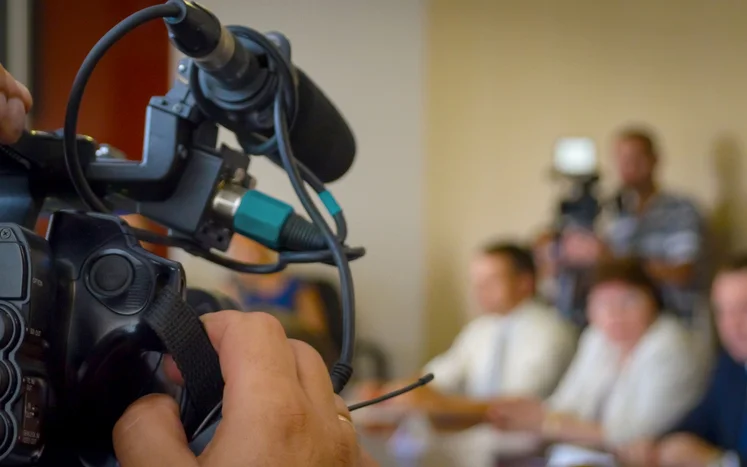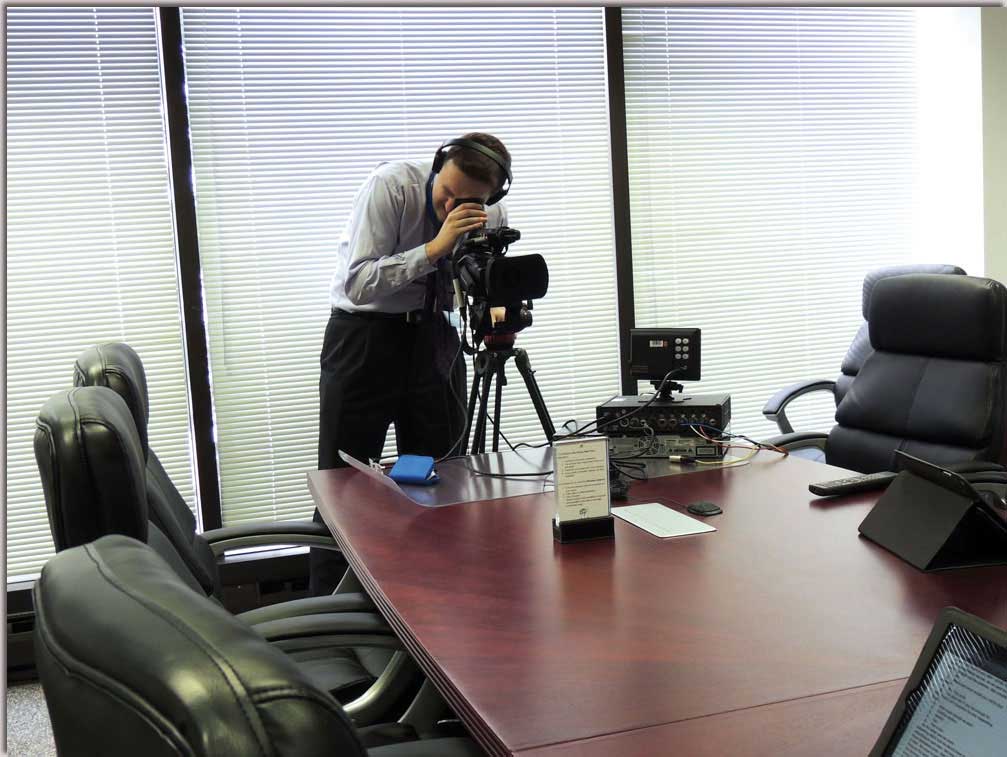The Importance of Legal Videography in Court Presentations
Lawful videography has actually arised as an important tool in court presentations, supplying a multidimensional viewpoint on witness testaments that goes beyond mere transcripts. legal videography. By capturing the subtleties of behavior and emotion, these recordings can considerably enhance the persuasive power of a case. In addition, the strategic use top notch video clip can engage jurors in ways that traditional proof might not. As we discover the numerous elements of lawful videography, including its advantages and finest methods, it ends up being apparent that its effect on the judicial process warrants a closer examination. What effects does this hold for the future of lawful procedures?

Understanding Lawful Videography
How does legal videography improve court room presentations? Legal videography is a customized area that captures visual and audio recordings of court room process, depositions, and witness testimonies.
The process entails the usage of premium video clip tools and professional methods to make certain clarity and fidelity. Legal videographers are trained to comprehend court room methods and the legal relevance of the recordings they create. This expertise guarantees that the end product sticks to lawful criteria and can be accurately used as evidence.
Additionally, legal videography works as a very useful tool for appellate cases, where evaluating the original testimony is vital. The capability to review witness declarations in their original context aids in comprehending nuances that may be lost in written transcriptions (legal videography). In recap, lawful videography boosts courtroom presentations by providing a detailed, accurate, and engaging method of documenting and presenting evidence, ultimately adding to an extra enlightened judicial procedure
Benefits for Attorneys
Legal videography offers substantial advantages for attorneys, boosting their capacity to present cases effectively. Among the key benefits is the ability to capture witness testaments and depositions with accuracy, guaranteeing that the nuances of spoken and non-verbal interaction are preserved. This allows lawyers to provide a compelling story that reflects the reliability and emotions of witnesses.

Furthermore, the specialist quality of lawful video clip can reinforce a lawyer's credibility. A well-produced video clip shows thorough preparation and focus to detail, which can favorably affect the perception of both the attorney and their instance. The use of legal videography can speed up test procedures, as it allows for quicker reference to taped testimonies, decreasing the demand for lengthy reading of transcripts.
Enhancing Jury Interaction
Enhancing court interaction via using lawful videography can significantly impact the effectiveness of courtroom presentations. In an atmosphere where jurors are entrusted with soaking up intricate details, aesthetic help can work as an effective device to keep focus and facilitate understanding. Lawful videography changes typical evidence into dynamic visual narratives, allowing jurors to connect psychologically and cognitively with the material presented.
The incorporation of video proof can clarify complex information that may be tough to share via verbal click to read more testament alone. By offering a graph of events, the court can much more easily realize the context and nuances of the situation, bring about notified considerations. Additionally, lawful videography can evoke a sense of realistic look, creating a stronger connection with the realities and promoting empathy for the people entailed.
Reliable legal videography also suits diverse understanding designs within a court, improving retention of the information provided (legal videography). By appealing to both acoustic and visual students, attorneys can make certain that their disagreements reverberate with a wider target market. Eventually, the critical use lawful videography not only catches jurors' attention however also improves their total comprehension, bring about more equitable decisions
Kinds of Legal Video Clip Proof
The integration of videography in court room presentations encompasses numerous types of legal video clip proof, each serving distinctive purposes in the quest of justice. One noticeable category is deposition home videos, which record witness testimonies in a regulated setting, guaranteeing that essential information is protected and offered accurately during trials. These recordings permit jurors to observe the attitude and trustworthiness of witnesses, boosting their understanding of the testament.
Another substantial type is monitoring video, which can give essential context in criminal instances. This video evidence typically aids develop timelines, locations, and actions of individuals associated with an occurrence, therefore aiding the court in creating a comprehensive photo of the events.
Demonstrative evidence in video style is likewise necessary, as it can highlight intricate principles or recreate crash scenes. Such video clips aid jurors visualize scenarios that are otherwise difficult to comprehend through spoken descriptions alone.
Last but not least, evidence from body-worn cameras used by legislation enforcement can provide an unfiltered view of communications during vital events, contributing to transparency and responsibility. Each of these video clip types plays a crucial function in the court, improving the overall presentation of proof and sustaining a reasonable judicial process.

Finest Practices for Implementation
Just how can lawful experts efficiently incorporate videography right into their court presentations? To achieve optimum results, several finest practices need to be adhered to. It is crucial to choose skilled videographers that comprehend the legal context and can make certain that all recordings adhere to pertinent regulations. This proficiency assures that the footage is both top notch and admissible in court.
Next, professionals must intend the videography beforehand, determining crucial minutes and testaments that will enhance their situation. This calculated strategy enables focused content that resonates with the jury. Additionally, organizing the videos into meaningful sections customized to the court's modern technology will certainly promote smooth assimilation throughout discussions.

Furthermore, legal teams should practice just how to offer the video clip evidence efficiently, making certain that all participants are acquainted with the material and the innovation being utilized. This prep work reduces interruptions and optimizes effect. Lastly, maintaining a clear narrative and attaching the video evidence to the overarching instance motif will reinforce the arguments being made.
Verdict
Finally, legal videography considerably enhances court room presentations by providing a comprehensive and interesting medium for witness testaments. Its ability to capture both verbal and non-verbal hints help in the clarity and performance of evidence, eventually sustaining fairer judgments. By adhering to well established methods about his and employing finest techniques, lawful videography works as an important device for lawyers, cultivating greater jury interaction and understanding of intricate information within the legal procedure.